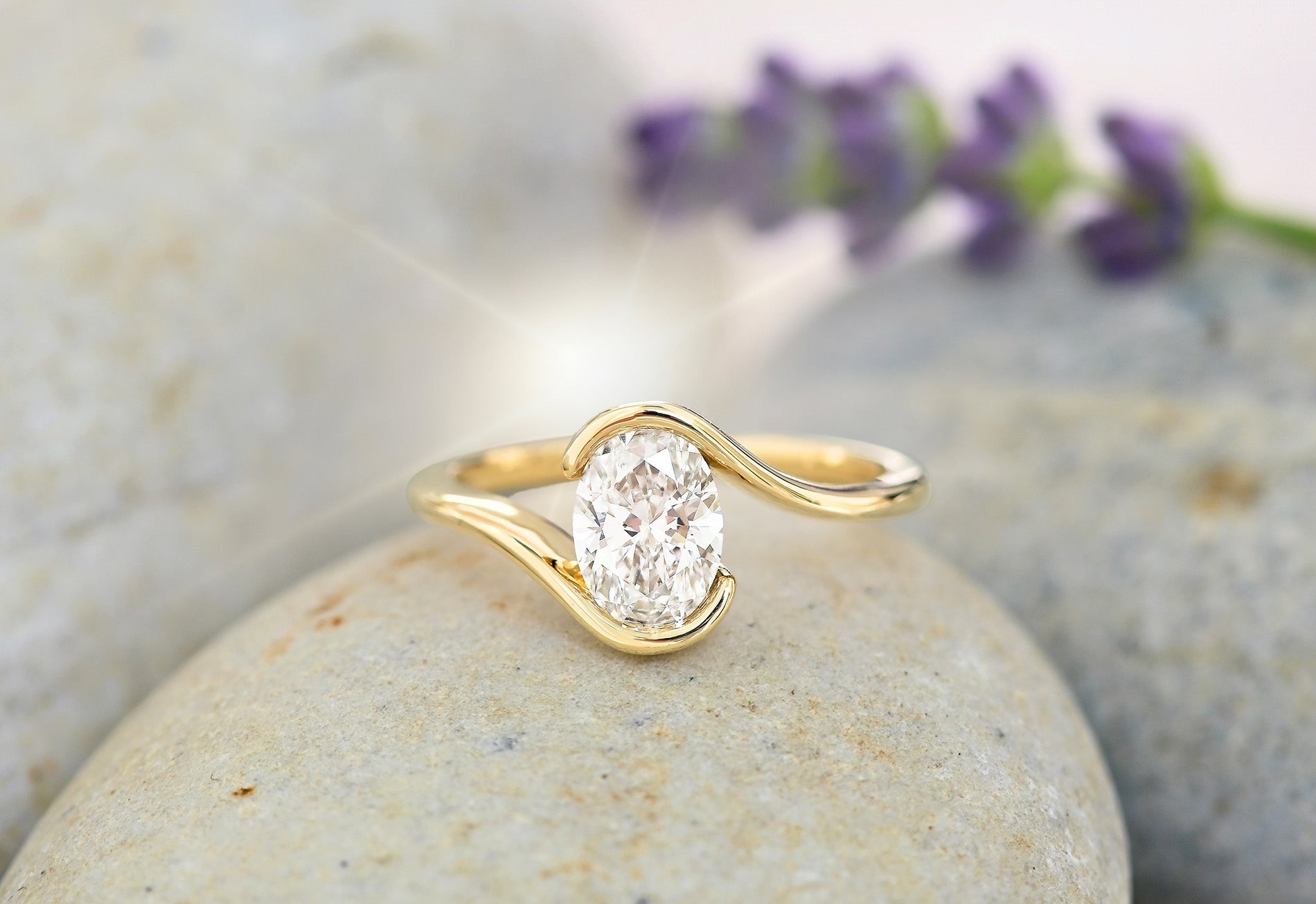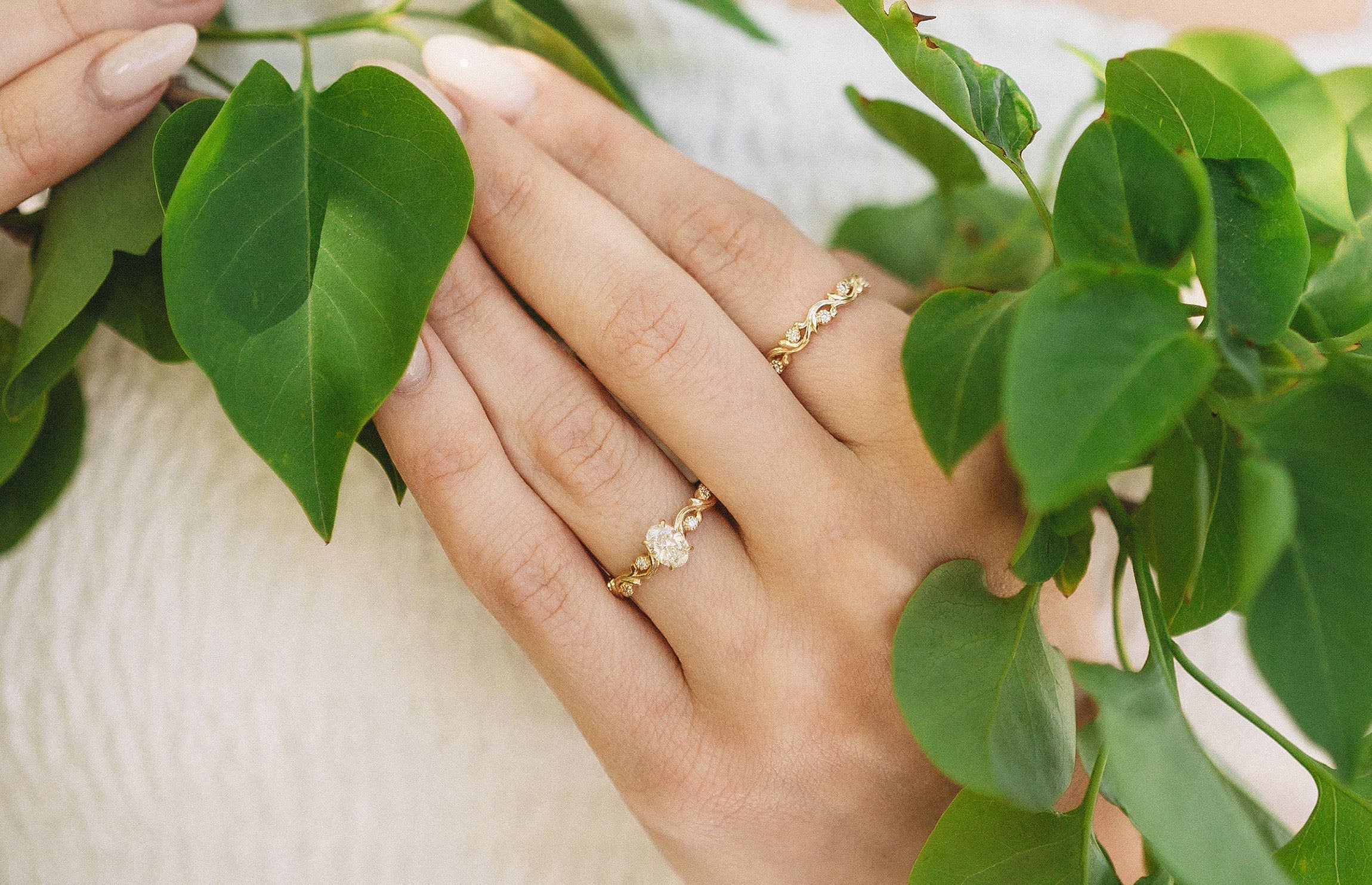From carbon grains to diamonds - laboratory diamonds are becoming more common
Laboratory diamonds have increasingly served as an ecological and economical alternative to traditional mined natural diamonds and their proliferation has inevitably influenced both consumer choices and the alternatives offered by the jewellery industry. All jewellery in the Festive collection has the option of a laboratory diamond and, in particular, the choice of a larger diamond for an engagement or wedding ring is increasingly possible as laboratory diamonds are a significantly cheaper option than natural diamonds.
Laboratory diamonds are manufactured in a simulated environment using two main methods, HPHT, a high-pressure, high-temperature process, and CVD, a chemical vapor deposition process. The HPHT method mimics the natural formation process of diamonds by growing a diamond around a grain of carbon, while the CVD method creates a laboratory diamond in a vacuum chamber by ionising a mixture of methane gas and hydrogen gas, which causes atoms to be layered into a diamond.
Although laboratory diamond is created under controlled conditions and not in the earth's crust, it is technically and physically identical to diamond, both in appearance and in use. Therefore, a laboratory diamond can be called a real diamond just as much as a natural diamond, only the process of creation is different.
Laboratory diamonds are available in every conceivable shade of colour, in addition to the traditional clear, colourless hue. Coloured laboratory diamonds are also an attractive alternative to coloured gemstones, which are becoming increasingly popular in festive engagement and wedding rings.
What would your dream lab diamond look like?






